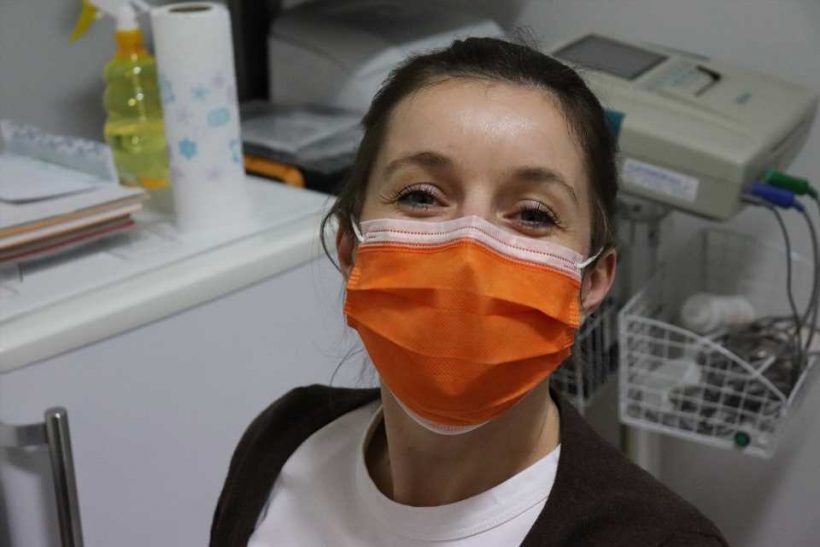
Throughout the COVID-19 pandemic, regular testing and vaccinations of nursing home staff have been critical strategies for containing virus outbreaks in nursing homes.
In order to assess how various structural factors affected the differences in testing rates and vaccinations, researchers analyzed data from nursing homes across the country, looking specifically at work shifts.
They found that day-shift staff had the highest testing rates and odds of primary vaccination, while night-shift staff had the lowest.
The study was published in the February issue of Health Affairs.
Work shift has not been recognized as a significant factor contributing to implementation of testing and vaccination programs at nursing homes, said lead study author Elizabeth White, an assistant professor of health services, policy and practice at Brown’s School of Public Health.
“Testing and vaccination programs have been so critical to mitigating the effects of COVID-19 in nursing homes,” White said. “Our findings suggest that any future booster campaigns or testing campaigns need to consider equitable distribution of resources across shifts to reduce the variation we saw in our study.”
She emphasized that the study findings have broader relevance beyond nursing homes as well as beyond the pandemic.
“Our findings highlight that work shift is an important structural factor to consider when implementing public health initiatives—from COVID vaccination and testing to flu vaccines—in organizations with shift-based workforces,” White said.
The researchers had access to a large and unique data set, White said, due to Brown’s involvement with an initiative by the National Institute on Aging called the Imbedded Pragmatic Alzheimer’s Disease and Alzheimer’s Disease–Related Dementias Clinical Trials (IMPACT) Collaboratory, co-led by Brown professor Vincent Mor, who is a senior author on the study. They analyzed nursing home data, including staff COVID-19 testing and immunization records, from 294 facilities for the period from April 2020 to March 2021.
The researchers found significant differences in testing rates and odds of primary vaccination by work shift: Night-shift staff testing rates were 0.71 times those of the day-shift staff, and evening-shift testing rates were 0.91 times those of the day shift. Controlling for staff and facility characteristics, adjusted vaccination rates were 67% among day shift staff, 62% among evening-shift staff, and 50% among night-shift staff.
The authors noted that differences in staffing levels and resources, work demands and the presence of senior and mid-level leadership across nursing home shifts may influence the implementation of organization-wide processes such as COVID-19 testing and vaccination.
Compared to staff who work during the day, staff who work the evening and night shift have less exposure to senior leaders, in particular the directors of nursing, medical directors and nursing home administrators, White explained. Other research throughout the pandemic has shown that those leaders, in particular, are important in building trust around vaccines and for helping to successfully implement changes in workplace health protocols.
Another important study finding, White said, was that the lower rates of COVID-19 testing among Black employees was almost entirely attributed to a disproportionate number of Black employees working on evening and night shifts.
“That tells us that shift is a structural factor contributing to a racial disparity in testing among staff,” White said.
The authors concluded that their findings highlight the need to coordinate resources and communication evenly across shifts when implementing large-scaled public health initiatives in nursing homes and other organizations with shift-based workforces.
“These results apply not only to nursing homes, but also to hospitals or even Amazon and other organizations with shift-based workforces,” White said.
The residents of nursing homes have been disproportionately affected by COVID, said White, as have the staff, who are often from underserved populations.
Xiaofei Yang from Brown University was also a part of the research team. Additional contributors included researchers from Hebrew SeniorLife (including Sarah D. Berry, co-leader of the IMPACT Collaboratory RADx-UP supplement); the University of Michigan at Ann Arbor; RAF Healthcare Solutions; and Harvard University.
More information:
Elizabeth M. White et al, Differences In Nursing Home Staff COVID-19 Testing Rates And Odds Of Vaccination Across Work Shifts, Health Affairs (2023). DOI: 10.1377/hlthaff.2022.01011
Journal information:
Health Affairs
Source: Read Full Article
